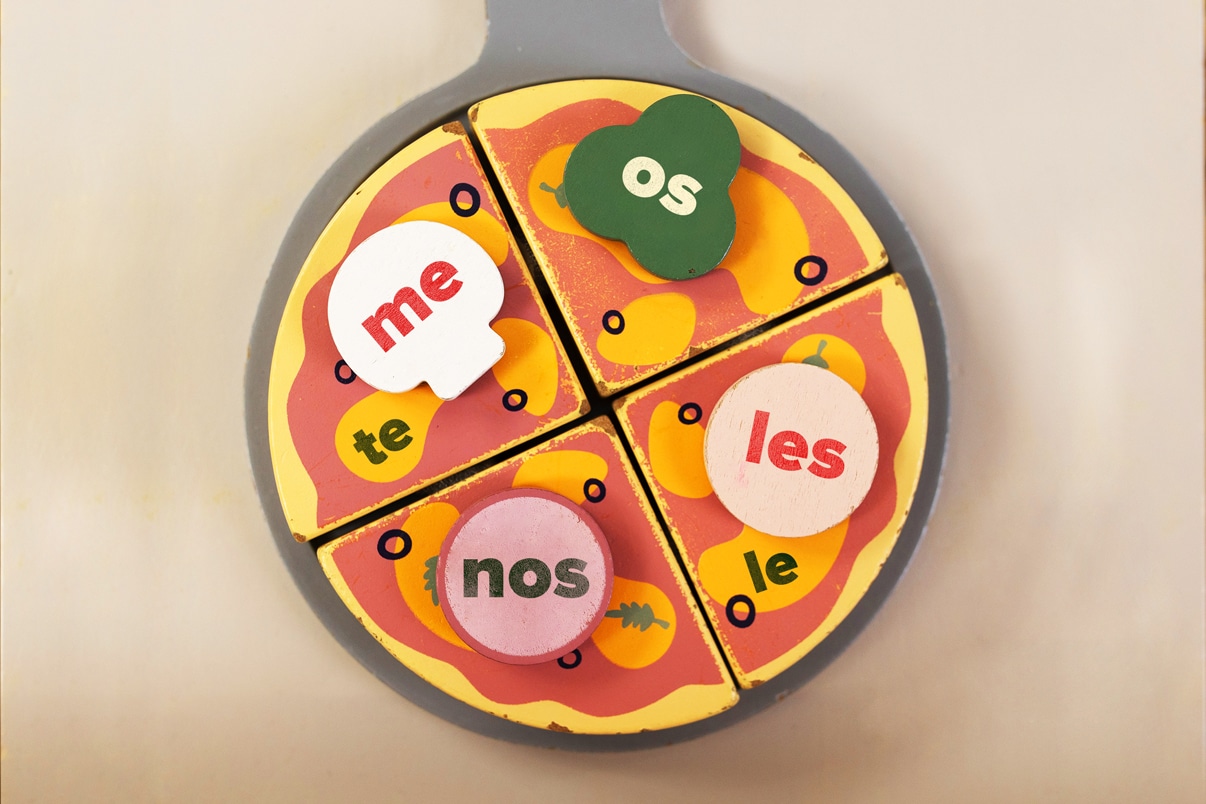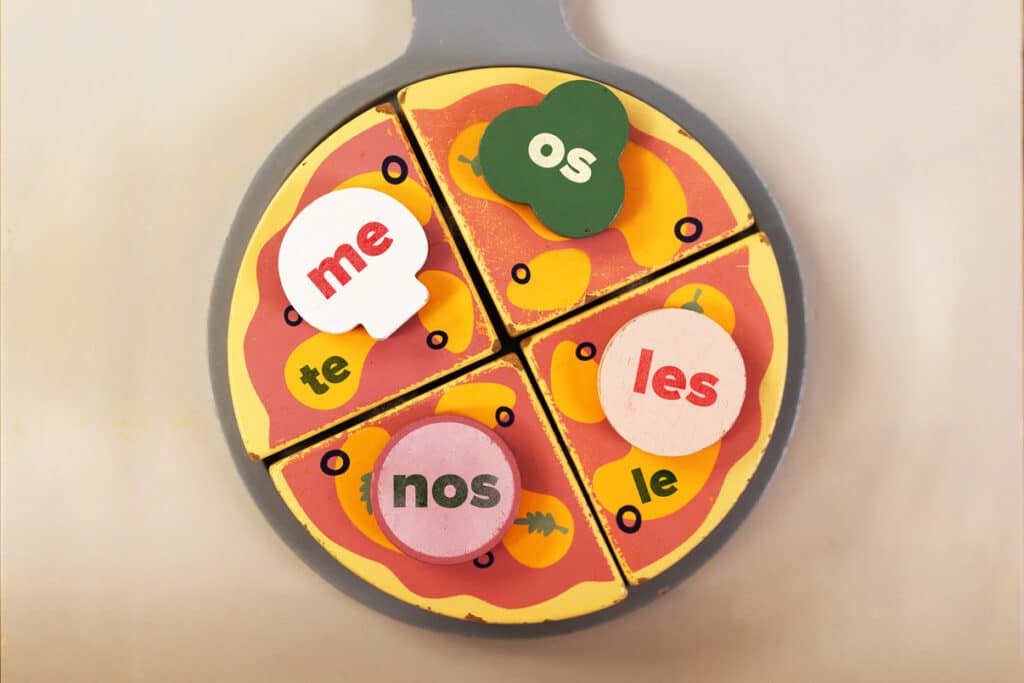
[ad_1]

Oblique object pronouns assist make our speech extra fluent and simpler to know.
In case your objective is to talk naturally, you’ll must grasp these little phrases.
On this publish, you’ll study the six oblique object pronouns, their meanings and tips on how to use them.
Contents
Obtain:
This weblog publish is out there as a handy and transportable PDF that you simply
can take anyplace.
Click on right here to get a replica. (Obtain)
What Are Oblique Object Pronouns?
Spanish pronouns exchange nouns. For instance, you possibly can change this sentence:
“I ate the pizza.” to “I ate it.”
In Spanish, there are two principal varieties of pronouns: direct object pronouns and oblique object pronouns.
Oblique object pronouns reply the questions “to whom” and “for whom.”
Take this sentence for instance:
“I purchased pizza for my household.”
The pizza is the direct object, as a result of it’s what you acquire. However your loved ones is the oblique object as a result of they’re affected by the motion and receiving the thing.
So in English, utilizing an object pronoun would change the sentence to “I purchased pizza for them.”
What’s the Distinction Between a Direct and an Oblique Object?
A direct object pronoun receives the motion of the verb instantly, whereas the oblique object pronoun is affected by the motion and receives the thing.
When you say “I’m shopping for pizza for my household,” you aren’t shopping for your loved ones. You’re shopping for a pizza.
Since your loved ones is receiving the thing (the pizza), this makes them the oblique object.
The 6 Spanish Oblique Object Pronouns
Now that what oblique object pronouns do, it’s time you study what they’re.
There are six oblique object pronouns in Spanish:
| Oblique Object Pronouns | |
|---|---|
| me (me) | nos (us) |
| te (you) | os (you all) |
| le (him, her, it, you formal) | les (them, you all formal) |
When you’ve already realized the direct object pronouns, you would possibly’ve acknowledged that these are similar, aside from the third-person singular and plural.
Spanish Verbs That At all times Require Oblique Objects
Some verbs in Spanish should use oblique object pronouns. I like to recommend committing these to reminiscence by including them to your flashcard decks with the pronoun connected to the infinitive to keep away from by accident leaving it out.
Le is all the time the oblique object pronoun that the dictionary makes use of with these verbs (so I’ll too), however bear in mind to switch it with the right one whenever you’re really utilizing the verb in actual life.
Listed below are 15 verbs that all the time take oblique object pronouns:
The way to Use Spanish Oblique Object Pronouns
Discover the Oblique Object in a Sentence
To search out the oblique object, we have to ask “to/for what?” and “to/for whom?”
When you’ve discovered the reply, you’ve discovered the oblique object.
Change Oblique Objects with Oblique Object Pronouns
Check out these two sentences:
Ella compra un regalo para mí. (She is shopping for a gift for me.)
Escribo una carta para ti. (I’m writing a letter for you.)
Within the first sentence, mí is the oblique object as a result of she’s shopping for the reward for me.
Within the second sentence, ti is the oblique object as a result of I’m writing a letter for you.
So we are able to exchange these oblique objects with pronouns like this:
Ella me compra un regalo. (She is shopping for me a gift.)
Te escribo una carta. (I’m writing you a letter.)
Utilizing the Preposition A and the Oblique Object Pronouns Le and Les
For oblique object pronouns le and les, generally you’ll want to make use of the preposition a.
Some Spanish verbs observe the sample verb + one thing + a + someone.
Two examples of this are:
dar algo a alguien (to provide one thing to someone)
decir algo a alguien (to inform one thing to someone)
That is particularly vital if the context isn’t very clear.
For instance, in case you say one thing like this with no earlier context:
Le doy caramelos. (I give ? some sweets.)
You don’t actually know in case you’re giving the sweets to him, her or a proper you.
What do you do, then?
Properly, you possibly can say who the recipient is by utilizing the preposition a.
So the earlier instance would grow to be:
Le doy caramelos a él. (I give him some sweets.)
Another examples of double oblique objects are:
Le escribo una carta a María. (I write a letter to María.)
Le compro un coche a él. (I purchase him a automotive.)
Les digo la verdad a ellos. (I inform them the reality.)
Les doy un regalo a los niños. (I give the children a gift.)
Phrase Order When Utilizing Direct and Oblique Object Pronouns in Spanish
When there’s a direct and oblique object pronoun in a sentence, there’s a particular phrase order you’ll must observe. And in a particular case, le and les change to se.
On this part, we’ll dive into phrase order and phrase modifications when utilizing oblique and direct object pronouns collectively in a sentence.
1. Place the oblique object pronoun earlier than the direct object pronoun
The direct object is generally a factor, and the oblique object is often an individual.
This rule is simple to observe whenever you consider it that approach. Merely put the particular person first.
For instance:
Le compro regalos a mi mamá. (I purchase my mother items) → Le los compro a ella. (I purchase them for her.)
Les doy una mascota a mis hermanas. (I give my sisters a pet) → Les la doy a ellas. (I give it to them.)
Word that the second model of those sentences isn’t the way you’d say them in precise speech. That brings us to our final rule:
2. Direct object pronouns and oblique object pronouns within the third-person use se
Check out these:
| Unique Model | Right Model |
|---|---|
| le lo | se lo |
| le la | se la |
| le los | se los |
| le las | se las |
| les lo | se lo |
| les la | se la |
| les los | se los |
| les las | se las |
With this in thoughts, the right model of the examples from the final notice could be:
Le los compro a ella. → Se los compro a ella. (I purchase them for her.)
Les la doy a ellas. → Se la doy a ellas. (I give it to them.)
For extra on direct object pronouns, see our publish right here:
As you possibly can see, studying to make use of oblique object pronouns in Spanish doesn’t simply make you sound extra fluent—it’s additionally extra handy!
With a little bit follow, harnessing the powers of those helpful little phrases will come simpler and simpler to you.
[ad_2]